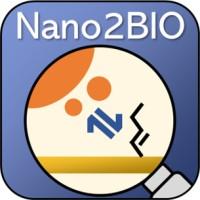Projects
Our team had the opportunity to work on various projects. These meaningful projects all had a specific goal.
RESONANCE project (2023 – 2027)
Funders: ANR
BPI Lead: B. Brunel
The objective is the project is to develop a surface enhanced Raman scattering (SERS) biochip for extracellular vesicles (EV) characterization, while keeping it compatible with surface plasmon resonance imaging (SPRi) and atomic force microscopy (AFM). Raman spectroscopy (RS) allows to have a molecular signature without contact and without labelling, providing additional information on EVs to have a more discriminating characterization. Raman scattering being of low intensity, two axes will be developed to go beyond the classical detection limit. The first one is the use of surfaces able to enhance Raman scattering (SERS), and the second axis is the development of machine learning algorithms for data denoising.
BISMAFIS project (2023 – 2025)
Funders: SUPMICROTECH-ENSMM
BPI Lead: J. Dejeu
The objective is to develop biochips with a greater number and diversity of immobilized compounds to better qualify injected samples. This will constitute a real challenge in the analytical field, as it will involve chemical patterning strategies and the grafting of both biological and synthetic ligands (antibodies, aptamers, nucleic acids, proteins) onto the same support using different surface activation methods.
Through this project, we aim to eventually provide the scientific community working in the field of innovative drug bioproduction with a methodology and multiplex chips for the identification and individual quantification of key compounds, including extracellular vesicles, to aid in understanding the "Composition/Function" relationship.
ENDOMITOPAH project (2023 – 2027)
Funders: ANR
BPI Lead: W. Boireau
The main objective of the project is to combine in-vitro and in-vivo approaches to establish the role of endothelial microvesicles (MVs) and microvesicles containing mitochondria (mito-MVs) and mitochondrial transfer in hepatic toxicity during exposure to a qualitatively and quantitatively realistic cocktail of hydrocarbons. Such a project aims to uncover novel toxic mechanisms associated with exposure to dietary PAHs and to gather new data needed to determine if MVs and mito-MVs are potential biomarkers.
NOVICE project (2021 - 2024)
Funders: EUR EIPHI
BPI Lead: C. Elie-Caille
This project involves developing a new generation of high-throughput, multiparametric analytical platform for the rapid and discriminative characterization of subpopulations of extracellular vesicles (EVs) contained in complex biological samples. The increased need for qualification of EV subpopulations coexisting in a patient's biological fluid (such as blood, plasma, urine, etc.) is now clearly expressed by many biologists and physicians, particularly in the field of in vitro diagnostics. These vesicles are heavily involved in numerous pathologies (inflammatory diseases, cancers, blood diseases, etc.), and better phenotypic and morphomechanical qualification of the subpopulations would allow physicians to cluster patients according to their EV profiles, and potentially make better and more targeted treatment choices.
MULTI-MACS project (2024-2027)
Funders: EUR EIPHI
BPI Lead: W. Boireau
The Multi-MacS project is an interdisciplinary initiative aimed at developing nano/microstructured bioplatforms with surface plasmon resonance to measure and detect a range of multi-scale biological targets (from molecules to vesicles) simultaneously (multiplex format) within cell secretion products (secretomes) derived from macrophages and fibroblasts. These biological products possess pro-inflammatory or pro-resolving properties, which are being particularly investigated by the project team with the goal of understanding the mechanisms of regulation and resolution of fibrosis.
Myélome Multiple project (2020-2024)
Funders: FFRMG
BPI Lead: C. Elie-Caille
Non-alcoholic fatty liver disease (NAFLD), defined by the presence of lipid droplets in hepatocytes, has become very common. Beyond purely hepatic alterations, these conditions can also be linked to brain diseases. Recently, researchers have considered environmental contaminants as a factor promoting the progression of steatosis to steatohepatitis, a severe disease. Exposome studies have shown that in France, Polycyclic Aromatic Hydrocarbons (PAHs) are the predominant environmental toxins in residential areas. This chemical stress can alter the content of extracellular vesicles (EVs), which are membrane-bound nanovesicles released by all types of cells. Therefore, the aim of this project is to study the role of EVs in the pathological progression of fatty liver disease to steatohepatitis during PAH exposure and to understand the potential link with brain damage via EVs.

